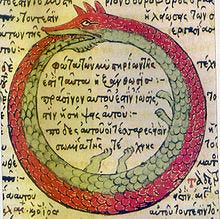animating your designs (issue 6)
This is The Ordinary, my attempt to notice the unexpected joy, value, and rigor of ordinary things. New subscribers, welcome!
What you can expect from me (almost) every Friday:
A very ordinary quote
A roundup of very ordinary reads
A brief and very ordinary note
A very ordinary visual
- Ammar
An Ordinary Quote:
In the information age, language is often reduced to the mechanical conveyance of bits of data. Such language, suffering under the deadly force of reductionism, is stripped of its life-bearing, meaning-enhancing mystery and power. It contains no force of transmission.
Roaring Silence, Khandro Dechen & Ngakpa Chogyam
Some Ordinary Reads:
“How Notion Pulled Itself Back from the Brink of Failure” (blog): The founders of Notion rebuilt their business and their product through a process of rapid design iteration: “He’s programming, I’m designing. I could be programming, he’s designing. We were able to explore the maze together.”
“Stealing Life” (The New Yorker): David Simon is the writer behind my favorite show (The Wire). This profile on Simon discusses how important it is for television to strive to represent real life: “The American entertainment industry gets poverty so relentlessly wrong… Poor people are either the salt of the earth, and they’re there to exalt us with their homespun wisdom and their sheer grit and determination to rise up, or they are people to be beaten up in an interrogation room.”
“Inner Engineering” (book): Sadhguru’s timely book on what freedom and liberation really mean in today’s world: “When pain, misery, or anger happen, it is time to look within you, not around you.”
An Ordinary Note:
A design is a plan or an outline, a representation or sketch of some sort. What does it mean to design something? Quite simply, to communicate a model of a system.
A blueprint is a design for a house, with particular attention paid to layout. It communicates where things are in relation to each other. Curiously, it is drawn from a birds-eye view. The blueprint is not the house itself, it is a model of the house.
A design communicates what will be done or ought to be done. It is not the final product.
But a world full of designers creates a world full of models. We applaud the meticulousness of plans, the genius of an exquisite scheme. We mistake the representation for the real thing. Something is missing from the picture.
Animating the Design
Beyond what will be done or ought to be done (the design) is the actual bringing to life of something, the infusion of a plan with spirit and vigor and all the uncertainties of reality.
What is missing is animation.
As the story goes, when the University of California-Irvine first opened, it did not have any sidewalks or footpaths. The designers wanted to observe how students got around campus.
One year later, UCI finally got sidewalks. Where the grass had begun to brown with foot traffic, that is approximately where the pavement went down. The designers animated their models with the real and the ordinary.
This is not how most design implementations go. Usually, there’s a very strict divide between “designers” and “animators”. The designers enjoyed their process of contemplation and imagination, while the animators gleefully worked out the cursed details. Sadly, animators love to animate and designers love to design, so the lack of cross-pollination is often welcomed.
As a result, many of the objects and systems we see around us are not well-animated or well-designed. Either the designs become complex (“overanimated”) or the animations become eerily inhuman (“overdesigned”).
Animating Your Own Designs
This design-animation imbalance in industry is not much of a surprise. We live out this imbalance in our own personal lives.
Privately, we are all designers. While we rub the suds out of our soapy hair in the shower, we scheme and we plan and ruminate and imagine our possible lives.
We are constantly designing our experiences with the possibility of what these experiences could have been or could become.
Privately, we are all animators. Our nervous tics, our reactions, compulsions, our tendencies to solve our problems one way or another.
We are constantly animating our experiences without really being aware of why or how we’re doing what we do.
What is often missing is the union of design and animation.
Just a little bit of the cold wind of reality to test these designs. Just a little bit of stillness to become aware of the animation. Just a little bit of both to realize they are one and the same.
An Ordinary Visual:
The Ouroboros, the snake eating its tail, the endless cycle, the lack of distinction between one and another:

